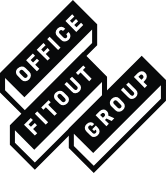It is no surprise that the average office worker spends 90 percent of their working time in the office. This time is often consumed with paperwork, projects, endless email communications and various activities that can drain motivation and energy.
Companies that want motivated employees understand that hiring the right people is important, but so is having the right office environment. When employees are at ease in their work space, motivation, creativity and productivity are increased exponentially. Drab office interiors destroy these qualities and turnover rates are always high.
Setting the Mood
The typical office is garishly lit with florescent bulbs, opting for “optimal” lighting for the comfort of the worker. Desks and cubicles are neatly ordered to give an air of productivity and organization, with inexpensive yet “ergonomically” designed chairs and equipment. Walls are usually bare or scattered with attempts to inspire employees through the use of the “motivational word pictures” seen in many offices these days.
These are the standards that many office managers think drive employees to greatness, while in truth it is driving many away.
An office needs to set a tone of invitation. You want to invite the worker into a relaxed, comforting environment that will spark their creativity and drive their motivation. The need for florescent lighting can be minimized by using desk lamps which reduce eye strain.
Workers feel more at ease when in control of their own lighting.
Above all else, make proper use of windows in the office. Do not keep them darkened with shades and closed to the outside world. Nothing says “trapped in the office” like closed window shades.
Walls that are completely or mostly bare, should be enhanced. Drab colours like white and barely-beige only enhance the negatives of florescent lighting. Consider a more neutral and appealing colour, such as a full beige or muted green.
Incorporate artwork that truly inspires. “Inspirational Word” images are the least inspiring thing workers can see; most are scoffed at, if they are even noticed at all. Opt for images that show the greater beauty of the world outside, like stunning landscapes or city skylines, and bring the world inside for your employees.
Add Flair to the Layout
Workers feel alienated by cubicles and desks that are set for function. While a neat and orderly office landscape may appeal to some, most workers feel at ease with a little less organization.
There should be a flow to an office interior. The right flow does not mean every desk, in every room, should be uniform. For an office to flow, make changes that mix up the layout of desks. For instance, groups that work together on projects often, should have an area set up to inspire communication and creativity, with desks that face each other and allow for easy exchanges.
Add life to every area of the office through the use of plants. Real plants are preferred, but well-maintained and clean artificial plants work as well.
Plants serve an important purpose in an office interior; they add life.
An office environment can be seen as a nearly lifeless place where only the work survives. Bringing plants in adds the spark of life that only nature can provide. Plants add comfort and serenity to an office and employees thrive on these qualities.
Furniture, Furniture, Furniture
The average office employee leaves work and goes home to a relaxing, and more importantly, comfortable home. Their favourite chair or sofa is waiting, and it beckons them to sit and let the day’s stress melt away.
Why shouldn’t a worker feel this way about their office? This does not mean go out and buy a bunch of sofas or recliners for your staff, but a couple here and there would not hurt.
Meditation rooms are an amazing way for employees to relieve stress at work. A simple room with soft lighting, soothing music and a comfortable lounge chair or sofa to relax upon. When asked, the majority of respondents have said that a ten minute break in a meditation room rejuvenates their motivation and desire to work.
Office chairs are the bane of many workers. Ergonomically designed office furniture is all the rage these days. Companies are looking to reduce body stress on workers through better furniture; however, the wrong choices create the reverse effect.
Uniformity aside, not every worker is the same, and their furniture should not be either. The right office offers a choice of preselected chairs – two or three – to their workers, and allow them to control their comfort, while maintaining a uniform office.
Office interiors are the key to maintaining a productive workforce. The productivity, creativity and drive to succeed that companies yearn for from employees, often hinges on environment. For most workers, it is a subconscious element, but a drab office breaks down their ability to perform at peak levels. Companies that grasp this and create a well-rounded office interior that meets the aesthetic needs of employees, can expect to have a successful workforce.












